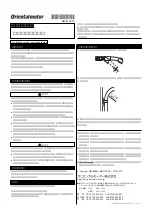
4
XAPP168 (v1.1) February 8, 2000
1-800-255-7778
Getting Started With the MultiLINX™ Cable
R
The MultiLINX
System
The MultiLINX cable comes complete with the MultiLINX pod, a USB cable, a 9-pin com port
RS232 serial cable with two 25-pin com port adapters (male and female conversion), four sets
of flying leads, warranty form and connection guide.
Connecting to
the Host
Computer
The MultiLINX cable pod may be connected to either the RS232 serial cable or the USB cable.
Only one cable should be used at a time. However, if both cables are connected the RS232
serial cable will override the USB connection.
The RS232 cable may be connected directly to the 9-pin com port of a PC. The 25-pin adapter
allows for connections to the 25-pin serial com port of a PC or UNIX Workstation.
The USB cable is keyed for a "Hos" connection at one end (rectangular) and a “function”
connection at the other end (square). The square end connects to the MultiLINX cable pod. The
rectangular end may be connected to the USB 1 or USB 2 port of a PC or to a USB Hub. Most
PCs today come with USB ports included on the motherboard. If your PC does not have a USB
port it may be possible to add a USB card to your system. Please consult your PC manufacturer
for accessories.
Connecting to a
Target System
The MultiLINX Cable has four sets of flying-lead connectors that are used to connect to a users’
target system. The lead ends fit standard 25-mil header pins. Such pins are commercially
available in either Wire-wrap or Solder-end style in break-away sections with 1/10 in. spacing.
The target end of the leads are loose. So, board placement of the header pins is not relevant as
long as they are no more than a few inches from each other. Extending the leads is possible,
but may introduce noise which may interfere with the cable’s operation.
The PWR and GND leads may either be connected to the target system or a separate power
supply; However, GND should always be common between the target system and the
MultiLINX cable for proper I/O communication. The MultiLINX cable requires a 3.3V input on
the PWR lead and requires ~600 mA nominally. For more information on the operating
specifications of the MultiLINX cable, consult the MultiLINX data sheet.
The I/O and configuration port connections support LVTTL I/O standard for either 5V, 3.3V, or
2.5V specifications. Current FPGAs and CPLDs use the LVTTL 3.3V standard. The following
sub-sections provide the required lead connections for the currently supported configuration
interfaces.
Slave Serial Connection
The Slave Serial Configuration Mode for any FPGA requires the use of the following leads:
•
PROG
•
CCLK
•
DONE
•
INIT
•
DIN
These connections are shown in
. For more information on the Slave Serial
Configuration Mode please consult the data sheet for the target FPGAs’ family type (e.g.,
Spartan-XL).





























